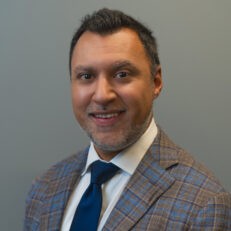
Being based in Colorado, we were excited to hear that our current Lt. Governor, Joseph Garcia, was named the new President of the Western Interstate Commission for Higher Education (WICHE), which works to expand access and opportunity across its 16 member states and territories. Garcia will begin his new role in July. Previously, Garcia served as the president of Pikes Peak Community College and the president of Colorado State University – Pueblo.
Having served across such a diversity of roles, Garcia has a unique and multifaceted perspective on higher education. Recently, I had the opportunity to meet with the Lt. Governor and gather his insights on the ongoing shift in focus to student outcomes and how higher-ed institutions will need to adapt in the years ahead.
An Interview with Joseph Garcia
Amit Mrig. You’re in a unique position, having served as the president of a community college, the leader of a 4-year institution, having run the Higher Education department for the State, and having served also as Lt. Governor. Given these multiple viewpoints, what do you see as the biggest challenges confronting higher education?
Joseph Garcia. When we started community colleges–when we first started talking about the Higher Education Act–the focus was really on access: How do we make sure more people from different backgrounds have the opportunity to get a higher education? When I served at a community college, that’s what we were about. It was an open access institution; we wanted students to come and pursue a credential. But for too long we have focused on access, and we have not focused enough on outcomes. So what we saw was that we were getting a lot more people into college, but we weren’t graduating many more from college.
Amit Mrig. If the big challenge is shifting from access to outcomes, what issues should be driving the agenda for higher-ed leaders?
Joseph Garcia. When the institution’s financial situation is discussed at the Cabinet level, unfortunately, that financial situation is driven by the institution’s enrollment, not its outcomes. This is not because the institution’s leaders don’t care about the outcomes; it’s because even in those states that are funding based on outcomes, state funds are no longer the primary factor in the institution’s operating budget. So the financial incentives in higher education are currently a little perverse. The institution is incentivized to enroll as many students as they can. So they are always chasing tuition dollars and they are competing more intensely with other institutions just to get those students in the door.
That has to change. I think that instead of spending so much time talking to CFOs and donors, presidents and governing boards need to spend more time talking to students. And that’s hard. You know, I’ve been to a lot of board meetings, both as the president of a community college and as the president of a university, and rarely have I heard from a student at those meetings. Rarely does the word ‘student’ even come up, because the board is focused on survival and on finances, and because they are focused on building that next, nice facility or student center that will allow them to compete more aggressively for full-pay students and tuition dollars. That is what needs to change. But it is hard when the financial incentives aren’t there.
Amit Mrig. What do you see as the biggest opportunity for colleges and universities to improve outcomes?
Joseph Garcia. I think there are two.
First, greater collaboration with secondary schools. In the past, higher ed has simply waited for well-prepared high school graduates to come to their doors. Now, what we have to be doing is working with those high schools to make sure students who are ready for it academically can take college-level classes while they are still in high school. In the past, this hasn’t been a focus for colleges because of the financial disincentive: we wanted those students to pay for their credits at the university, not at the high school. But we also want these students to be well-prepared, and they are more likely to be well-prepared (and in fact, more likely to go on to college) if they’ve taken concurrent enrollment prior to completing high school. This means we need to work with high schools to make sure that first, their graduation requirements align with our admission requirements. We can’t have students who graduate high school with a 3.5 GPA and a diploma fresh in their hands and then test into remedial courses. That is wrong.
Second, we need greater focus on career and technical education programs. We need to get students training in advanced manufacturing and computer programmings. These are fields that don’t require a bachelor’s degree but where there are both good job opportunities and a lot of unfilled vacancies in our markets. We particularly need to do more with part-time and working adults. There are so many folks who want to come back to college but can’t if that means having to take classes on campus during the work day. If we can adapt our delivery methods and our schedules to accomodate those students, we will both have better outcomes and be able to collect tuition revenue from a population that, right now, just doesn’t have access.
Those institutions that are most innovative, that work with local secondary schools and with employers to help credential non-traditional and part-time students, those are the institutions that are going to continue to fill their seats, generate tuition revenue, and get general fund support from the states.
Amit Mrig. Do you think workforce development is a mandate equally across public and private institutions?
Joseph Garcia. Yes, and also across nonprofit and for-profit colleges. Really, all of them. When we look at our workforce needs here in Colorado, we are not going to be able to meet them if we are looking only to our public institutions. It’s unrealistic; we are not supporting our public institutions enough financially to achieve this, and frankly, a lot of young people and working adults make other choices. So we want to make sure there are other options that are also incentivized to focus on outcomes. We have 250,000 people in our public institutions in this state. We have another 100,000 in for-profit institutions, which most people don’t realize.
Amit Mrig. Why is it taking so long at some institutions to adapt their educational delivery model and their business model to meet the needs of working adults?
Joseph Garcia. Well, the community colleges and the open-access institutions like Metro State, they have to. They are the quickest to adapt. The research institutions, and particularly the selective private institutions, assume that there are always going to be high school graduates knocking at their doors who are academically prepared and are going to pay fill tuition.
But that is not the case. There are fewer of those students.
All institutions, if they want to fill their seats in the future, are going to have to think about recruiting more non-traditional, part-time, and academically under-prepared students. As fewer traditional students with ample financial resources are available, they aren’t going to have a choice.
Amit Mrig. What advice do you have for higher-ed leaders?
Joseph Garcia. Talk to students.
Talk to students about what contributes to their success–but really push them with specific questions. If you just ask a student who is leaving why they are leaving, they will say affordability. But we need to dig deeper. Did they feel that they were part of the campus environment? Did they feel engaged? Did they feel supported? Did they feel that the college cared about their success? I think these things matter as much as money. There are scholarships, there is financial aid, but if a students enrolls and is not successful academically, their first thought–especially if they are a first-generation or minority student–is going to be, ‘I don’t belong here. I should never have come.’ And they will leave. We need to figure out how to build in support systems so that these students can persevere and move toward that credential.
We need to stop focusing just on who is going to give us money. We need to think about why our institutions exist in the first place–and that is to help students get a credential so they can move into our workforce and move into our communities and be successful. If the institution is focused on dollars or adding a building so that they can compete with some other institution to get more students, that is the wrong focus.
Amit Mrig. Thank you, Lt. Governor. We’re excited to see the work you’ll do at WICHE.


